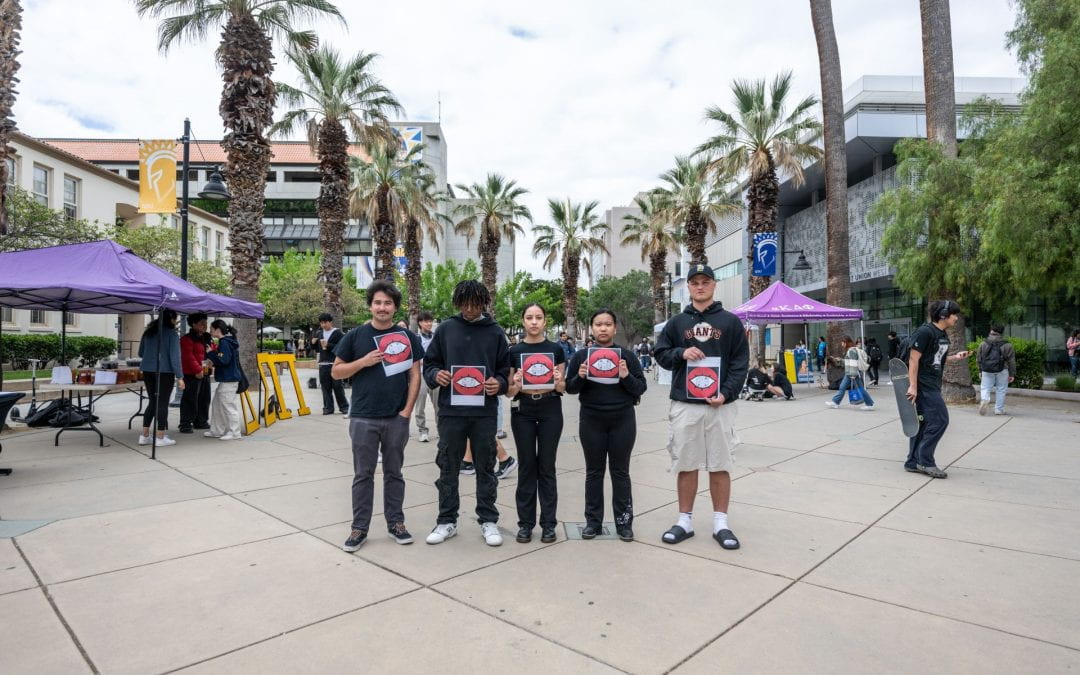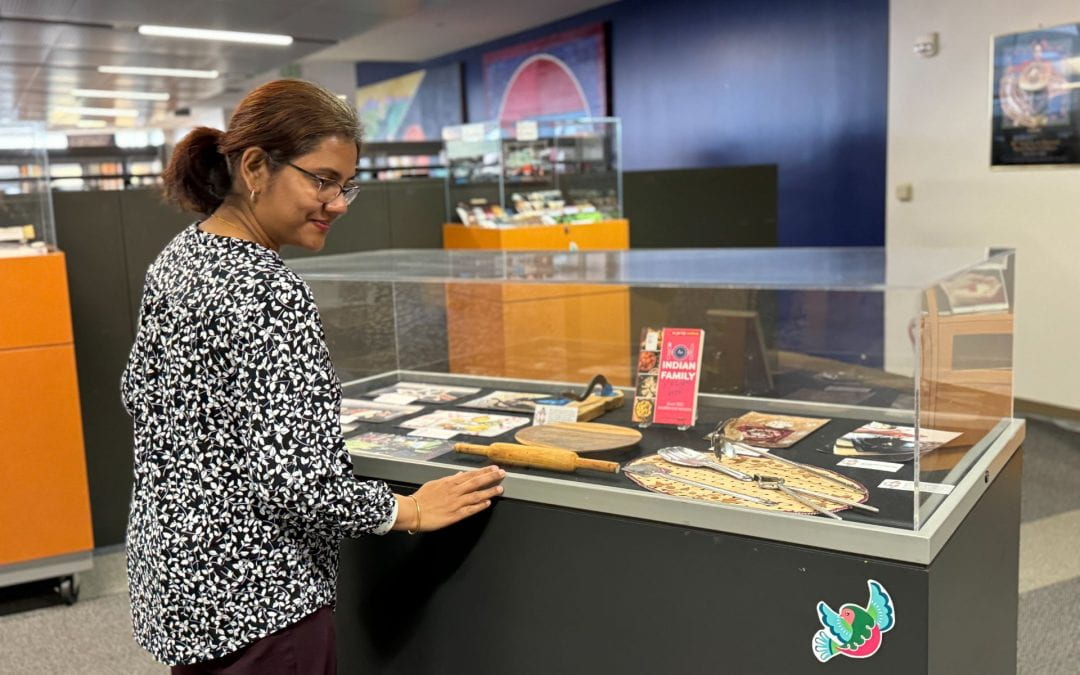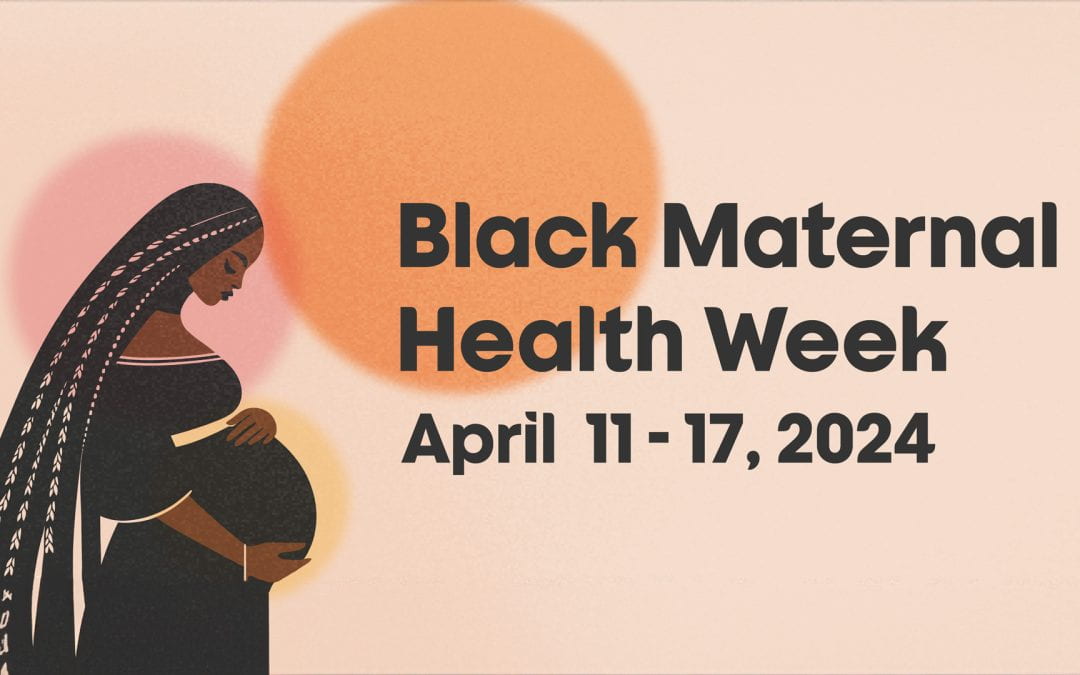Emilio and Samson, Side by Side

Emilio Gallegos served in the U.S. Marines from 1999-2010. Bay Area photographer Vicki Topaz interviewed him and his family for the film “By My Side.” Photo by Vicki Topaz.
Emilio Gallegos, ’19 Creative Writing, is a man composed of and covered in stories.
The Purple Heart veteran-turned-poet and father of two’s arms and legs are adorned in tattoos, including some reflecting Polynesian tribal symbols of family, community, new beginnings and strength, and a half-human, half-jaguar Mesoamerican character called the were-jaguar, meant to represent what he calls “the liminal, in-between space” where he existed physically, emotionally and spiritually after returning to California from deployment.
When Gallegos enlisted in the U.S. Marines in 1999, he couldn’t have predicted that his 11-year stint in the reserves would lead to multiple activations, including one deployment to Iraq, taking him far from his son and daughter. The distance deepend when, in September 2008, he drove his Hummer over an improvised explosive device (IED) on an elevated berm in Iraq, blowing up the front portion of the vehicle and fracturing his leg. The resulting injury is memorialized with a scar extending from his knee to ankle — and a series of tattoos honoring the source of pain.
But the injury extended far beyond physical scars and chronic pain. Like thousands of fellow veterans, Gallegos has coped with the long-term effects of post-traumatic stress and anxiety. For years, he struggled to communicate about his experience with his children, parents and friends.
“When I came back from Iraq, I tried so many therapies through the VA [Veterans Affairs], including exposure therapy, which meant writing about my incident over and over again,” he recalls. “I realized in 2010 that writing was something positive, something constructive for me. Like I say in a couple of poems, English literature saved my life.”
After completing his associate’s degree at San José City College, he transferred to San José State in 2014, shortly before the Veterans Resource Center opened. In one Shakespearean performance class, Gallegos selected meaningful lines from each of the plays read in class to write a poem that resonated with his military experience. One of his classmates later approached him to say that Gallegos’ performance expressed an emotional truth about reintegration into civilian life that he hadn’t seen before. For the first time, Gallegos saw how his words could impact others.
Enter Samson
Still, something was missing.
In 2016, Gallegos was introduced to a rescue dog named Samson through Operation Freedom Paws, a San Martin-based nonprofit that pairs dogs with veterans and people with disabilities. Initially, the lifestyle shift overwhelmed Gallegos, who didn’t feel equipped to manage both his needs and those of a dog, especially when Samson came with him to class. But in time, he realized that Samson served as so much more than a companion or roommate — he was, in Gallegos’ words, his “entry point” to everything: socializing, friendship and connection.
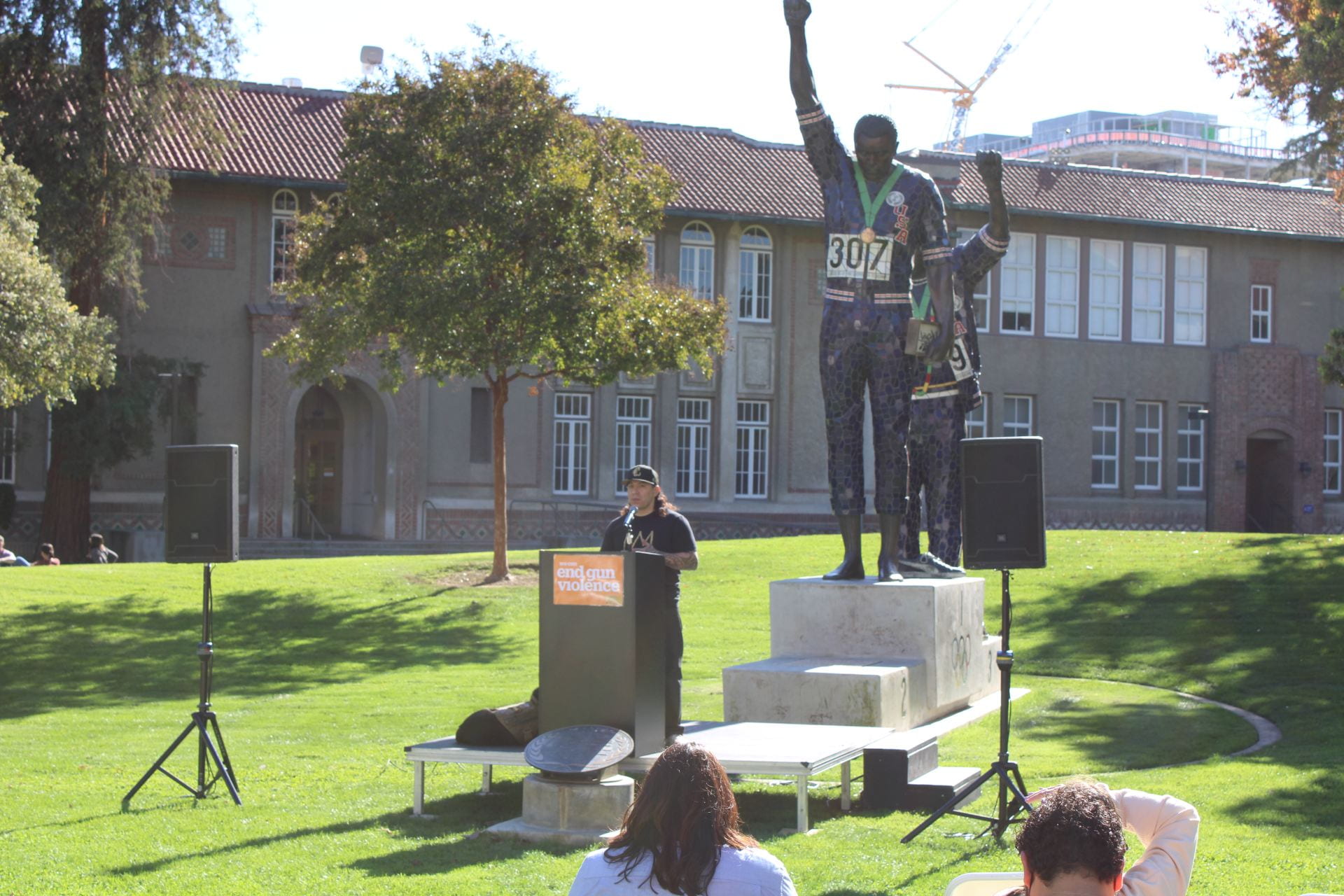
Gallegos performed a poem at SJSU’s Day of Action Against Gun Violence. Photo courtesy of the Center for Community Learning and Leadership.
When he takes Samson to the gym, a restaurant or any public place, people gravitate toward him because they are interested in the dog. Samson offers a convenient point of connection for Gallegos and others to relate to, with the added benefit that the dog can sense when his companion is upset and act as a calm, soothing presence.
“It’s one thing to be able to trust someone, but his unconditionality has taught me a lot,” he says. “He loves me regardless of who I am or what I am like. Sometimes, people in my position might feel unworthy of love, and even that they’re not able or worthy of loving another person or being. But having Samson has taught me that I can receive love and I can also give love.”
Samson has graduated with him twice — first at SJSU, and more recently at California College of the Arts, where Gallegos earned a master’s of fine arts in creative writing in 2022.
Expanding the conversation
Gallegos’ story doesn’t end there, though. Not long after he took Samson home, he connected with Vicki Topaz, a Bay Area photographer dedicated to capturing images of veterans and their service dogs. In time, she realized that though the images were powerful, they didn’t convey the full impact of military life, not only on veterans, but also on their loved ones and communities. She decided to follow three military families who had found success working with therapy dogs. And thus, her documentary “By My Side” was born. Among them: Gallegos, his daughter and his son.
“I met and began photographing Emilio and Samson years ago when they were first partnered. It was striking to watch the bond develop between them and to see Emilio become more engaged with the world,” Topaz says. “When he and his family were asked to be filmed, there was an immediate willingness. I felt their stories were longing to be told. I’m very grateful.”
Gallegos says that the interviews with his family were cathartic — like Samson, they were an entry point into longer, challenging conversations that reflected the effects of the war on them all.
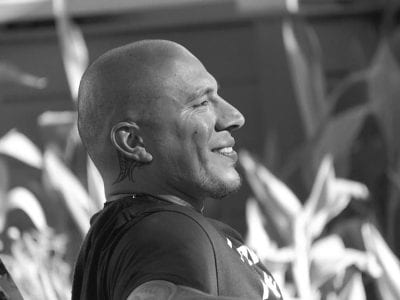
Gallegos will return to SJSU on September 15 for a screening of “By My Side.” Photo courtesy of Emilio Gallegos.
“I know that reintegration definitely does not happen alone,” he says. “I found that when I was trying to heal on my own, whether I was developing productive or destructive coping mechanisms, it was harder than when I brought my kids along. The movie’s been a big conduit for us opening up to each other, and the conversations we have are better because they know they can share how they feel with me.
“I’ve learned through my writing, which extends to my life, that if I’m not one hundred percent vulnerable, I’m not going to reach anybody,” he adds.
Gallegos will have another chance to be vulnerable at San José State on Friday, September 15, when he and Topaz will speak alongside Mary Cortani, founder of Operation Freedom Paws, and author Connor Quinn, ’18 Health Science, at a panel following a screening of “By My Side” hosted by the Center for Community Learning and Leadership.
RSVP to reserve your spot at the Sept. 15 film screening of “By My Side.”

